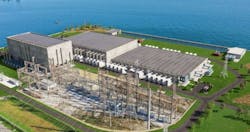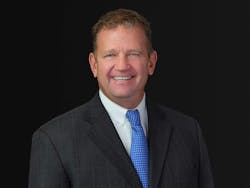Quantum Corridor expands quantum comms network plans
Quantum Corridor is an ambitious project to build a quantum-ready fiber-optic communications network to enable quantum innovators in Indiana and Illinois to exchange data nearly instantaneously—and it’s already expanded since we first talked to them a few months ago.
The network originates in Hammond, Indiana at the Digital Crossroads Data Center, and stretches 22.5 kilometers (14 miles) to Chicago’s ORD10 Data Center. An expansion is now in the works to extend the network from Hammond to Crane Naval Surface Warfare Center and Crane West Gate in Southwest Indiana.
In a cool move, 423.2 kilometers (263 miles) of new and existing fiber-optic cable beneath the Indiana Toll Road will be tapped to link data centers, quantum research facilities, researchers and scientists, and hyperscalers with quantum speeds and throughput.
Quantum commercialization centers are planned along the network’s route to house entanglement nodes, which will serve as relay points to ensure transmission efficiency. These facilities will also be mini data centers where customers, researchers, and students have access to work and learn.
What does it take to launch a project like this?
Thomas P. Dakich: Any time you attempt to transform the thinking of an entire state, it’s very difficult. So many people in leadership positions across the country are conflicted about the role of science and the role each state should play in promoting science solutions to relatively complicated problems.
Creating a fiber network to connect computers that don’t even work yet is quite challenging! As quantum research and computing continues to grow, networking these companies and computers together will become the most important way for advanced human research to move forward. I never want any person of leadership at either the state or the federal level to think they didn’t understand our project and, as a result, be against it. Our biggest challenge is to make certain people in leadership know what we’re doing and that they’re making informed decisions about support for our efforts.
How did you go about getting funding?
Dakich: Very early in the process, we hired an excellent and experienced investment banker to secure our first round of funding. Our pre-funding came from president and CTO Ryan Lafler, me, and the State of Indiana. We also used assets already available to secure more support for bigger parts of this project. We’ve closed our Round 1 and are now in our $140 million Round 2. Our eventual capitalization will exceed $7.7 billion.
Related Article
Any advice for others who’d like to launch a similar project?
Dakich: The expansion of technology during the second half of this decade will be much easier than it was the first half. Access to funding for these second and third groups of entrepreneurs will be markedly easier than it was for the first groups. This is how it works. I honestly believe quantum computing is going to change the trajectory of human thought, and problems we have today will be laughable compared to the solutions we are creating. My theory is the more money and people we get on board with the importance of what we are doing, the better!
Any goals shift for the project since you started?
Dakich: We started out thinking about connecting Indiana and Illinois in one network and now we've moved across the country and south to catch more groups and research institutions doing important work. The project just keeps expanding and getting bigger.
How is the Crane Naval Surface Warfare Center involved?
Dakich: Phil Smith and the people at Crane are amazing proponents for what we’re doing, and the work done by former Indiana Governor Mitch Daniels to secure the long-term future of Crane by promising to build a highway has sustained Crane as an important part of all defense research. The next connectivity points will not be surface roads, but rather quantum internet and advanced technology networking. We wake up every day with the mission to connect Crane with the highest level of connection back to those across the country who are doing the most important research in the world.
What’s next?
Dakich: Our network will connect Crane back to Chicago, connect Purdue back to both Crane and Chicago, and then connect both institutions to a whole defense and research infrastructure across the country. We’re just at the start of this networking revolution that is underway in quantum—and we are thrilled to be early.


